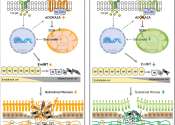High school student helps transform 'crazy idea' into a model that can predict neurotransmitters
Like many good ideas in science, it started with a walk in the woods. During a stroll through the Berlin Botanic Garden in 2019, HHMI Janelia Research Campus Group Leader Jan Funke and some of his scientific colleagues started ...
May 9, 2024
0
25









